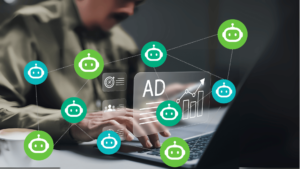By Rob Webster
The last month has seen a flood of AI agent announcements, many promising to redefine marketing execution. While some will be revolutionary, others may be more smoke than substance—or even carry significant risks. As marketers, we need a structured way to judge these tools, separating genuine innovation from empty AI hype.
Agentic AI refers to AI-powered systems that operate semi-independently to execute marketing functions, making decisions and taking actions based on predefined objectives and data inputs. These systems will be game-changers, but not all of them will be beneficial. Some may be overhyped, while others could even prove harmful. To evaluate these tools effectively, we need a robust framework.
1) What is it?
The first step is to categorize the tool at a high level. What function does the AI agent serve? A system might be designed for:
- Media planning – Allocating budgets and recommending channel mixes.
- Programmatic targeting – Managing bidding strategies and audience segmentation.
- CRM & personalisation – Automating customer interactions and lifecycle management.
- Analytics & insights – Synthesising data for reporting and predictive modelling.
- Creative optimisation – Generating or testing ad creatives and messages.
This step is usually well covered in product marketing, but history has shown us that some AI-driven marketing tools have struggled to articulate their true purpose. A clear definition of what the system does is essential before moving forward.
2) What does it actually do?
The next step is understanding what the agentic system is actually doing at a deeper level. This is where many AI vendors fall short, relying on vague claims rather than concrete capabilities. Key questions include:
- What specific tasks does the system perform?
- How is it architected?
This distinction matters because it determines the strengths, weaknesses, and limitations of the system. Many AI-powered marketing tools promise automation but operate more like glorified decision trees. Others might genuinely leverage advanced machine learning but fail to communicate how their outputs are validated.
Most importantly, why is this system better than the alternatives? A good AI tool should deliver meaningful advantages—whether that’s speed, precision, automation, or decision-making quality. If a vendor can’t articulate why their system is superior in practical terms, then “because it’s AI” is not a valid answer. A useful test: If you can replace “AI” with “magic” in a vendor’s pitch and it makes no less sense, they haven’t provided a meaningful explanation.
3) Challenge the Model
Beyond technical capabilities, the business model and operational implications must be scrutinised:
- What’s the pricing structure? Are you paying per usage, per outcome, or as part of a broader platform fee?
- What transparency do you have into its setup?
- Are you handing over too much control?
The trade-offs here vary. Some agentic systems will be no-brainers, while others will require careful consideration before adoption.
4) Proof Points: Does It Actually Work?
Once the AI tool has been defined and its approach assessed, it’s time to demand proof of its effectiveness. This can be done in several ways:
- Testing – Running controlled A/B tests to compare performance against traditional methods.
- Synthetic Data Simulation – Using structured test environments to evaluate outputs.
- Third-party validation – Seeking testimonials or case studies from trusted sources who have used the system.
- Industry benchmarks – Comparing its optimisations to known performance standards (e.g., CPM, CPA, CTR improvements).
It’s crucial to only test products that have passed the architecture and purpose assessment (Step 2)—otherwise, you risk wasting time on a system that never had clear advantages to begin with.
5) Ownership & Setup: Build, Buy, or Rent?
Agentic AI will become central to marketing workflows in the coming years. The final step is determining who owns, controls, and optimises these systems:
Building internally – Custom-built agentic systems ensure ownership and flexibility but require resources and expertise.
- Bringing in experts – Consulting firms or AI specialists can help set up and integrate systems tailored to your needs.
- Buying off-the-shelf solutions – Prebuilt AI agents from vendors may be the easiest route, but they come with trade-offs in control, customisation, and long-term ownership.
A key consideration: data governance. If your marketing agents are trained on your proprietary data, who owns the outputs? Do vendors retain access to insights generated from your campaigns?
Agency-owned AI tools also pose risks—if you rely on an agency’s agentic technology, you may become dependent on their ecosystem, making it costly to switch providers in the future.
Where possible, I recommend owning your AI agents or at least ensuring a hybrid model where core functions remain within your control.
The Future of Marketing: Human + Agentic AI Workflows
The shift to AI-powered marketing execution is inevitable. The question is not if agentic AI will transform marketing, but how companies will structure their approach. The future lies in humans and AI agents working together in optimised workflows.
This transformation is why I founded TAU Marketing Solutions—because marketing teams that fail to engage with this shift will find themselves at a severe disadvantage. The choices we make today about AI agents will shape the competitive landscape for years to come.
Make no mistake: This is the future of marketing. But as with any revolution, the right strategy is key. Evaluating agentic AI through a structured framework will ensure you invest in tools that truly drive results—rather than getting caught up in the hype.



